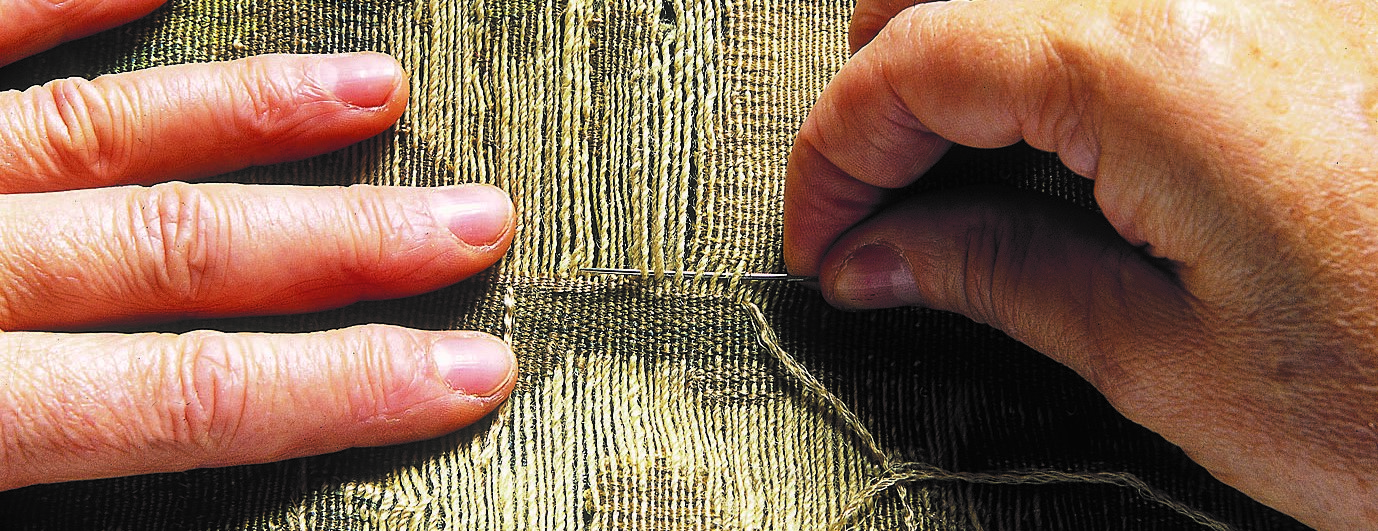SILK FARMING AND SILK PRODUCTION
Sericulture, silkworm farming and the silk industry associated with it, has an exceptionally long tradition. Silk production dates back to the 3rd millennium BCE. According to Chinese legend, silk was discovered by Empress Leizu, the wife of Xi Lingshi, the Yellow Emperor, who dropped a silkworm cocoon into her cup during an afternoon tea ceremony in her garden. As she retrieved the cocoon from the tea, a beautifully shiny silk thread began to wrap around her fingers and felt exceptionally pleasant to the touch. As she unwound the thread from the cocoon, she knew immediately that the precious silk thread had been produced by the small silkworm that had remained in her cup.
Silk threads and fabrics were highly valued trade goods, fuelled by the ban on the dissemination of knowledge about silk production and silk farming. It was not until the middle of the 6th century that two monks smuggled silkworm eggs in their walking sticks from China to Constantinople, which soon became the Western centre of silk production. Combined with gold and precious stones, silk fabrics were a highly desirable material for European church dignitaries and nobility alike. During the Renaissance, silk farming and weaving in Europe reached its peak in Italian cities such as Venice, Florence, Milan, Genoa, and Lucca. In the clothing culture of the wealthier classes, brocades, velvets, and satins, which were still popular in the Rococo period, were among the silk fabrics that gained popularity.
History of Silk Farming in Slovenia
In the 16th century, silk farming expanded into what is now Slovenia via the Venetian Republic, Friuli, and the Gorizia-Gradišča region. In Ljubljana, it is known that the guild rules for weavers of ribbons and silk fabrics were approved in 1674, and that Pierre Toussaint Tabouret founded one of the first silk hosiery manufactories there in 1725, followed by many others by the end of the 18th century. However, in the first half of the 19th century, most of the silk mills in Carniola slowly disappeared, and in 1844, silk farming was completely abandoned and the mulberry trees cut down. In the 18th century, silkworm farming was also well known in Styria. For example, the silk manufactory of Josip Gotterer was active in Maribor, and in 1794, an attempt was made to establish silk farming at Vetrinjski Manor, where Baron Philipp Heinrich Schaller and Johann Hütthaler intended to plant mulberry trees and start silk farming, but the coming war put the brakes on the idea. Another major problem for silk farmers was silkworm nosema disease, a disease that caused a significant decline in cocoon yields after the mid-19th century. Silk farmers tried, among other things, to replace their crop with oak processionary moths or yamamai (Antharea yamamai), which are immune to the diseases of domesticated silkworms, but which were more difficult to reel silk from and soon proved to be insufficiently profitable for breeding. Planned planting of land with mulberry trees is also closely linked to silk farming in Slovenia. For example, in the 18th century, patents to promote silkworm farming called for the planting of mulberry trees on all abandoned land, and farmers were obliged to plant a certain number of seedlings depending on the area of land they owned. After 1815, the task of promoting silk farming passed into the hands of various agricultural companies and individuals, and knowledge was disseminated through articles in agricultural newspapers, as well as through the setting up of experimental outposts and various levels of agricultural schools. Ivan Bolle (1850–1924) is particularly important for the dissemination of knowledge on silk farming, as he presented the subject from a broader perspective than his predecessors. His works A Brief Instruction on the Rational Breeding of Silkworms and Silk Farming in Japan, published in 1882 and 1898 respectively, were backed up by years of Bolle’s practical experience.
Sericulture Revival in the 20th and 21st Centuries
At the turn of the 20th century, silk farming in what is now Slovenia became a side business for small farmers. Due to the import of cheaper cocoons from Asia, it was increasingly uncompetitive and, despite state incentives and attempts to revive it, it gradually died out owing to a lack of demand. After 1945, the Yugoslav authorities tried to preserve silkworm farming. For example, in 1948, a new silk farming outpost was built at Pristava near Nova Gorica, and in 1952, a decree protected mulberry trees and banned their deliberate felling.
The revival of sericulture and moriculture in Slovenia in the beginning of the 21st century took place in the framework of a bilateral project in which Hungarian and Slovenian universities, led by Dr. Andreja Urbanek Kranjc and Dr. Rebeka Lucijana Berčič, studied old mulberry varieties, their botanical aspects, and their impact on silkworm breeding. The project has also created a website to raise awareness about mulberries, a morarium, a mulberry plantation in Pivola near Maribor, and a non-profit research institute in Maribor, which encourages and educates interested breeders in order to establish Slovenian silk production.
Silk Production
Who wouldn’t want to wear comfortable and beautiful clothes woven out of silk threads? Not only that, but because the entire production of silk fabrics uses 90 percent less water than cotton, silk is also a very eco-friendly material! In the past, silk threads were not only used to make clothes, but were also woven into beautiful tapestries, including those still on display in Ptuj Castle.
A silk producer needs to harvest about 40 kilograms of cocoons to get six kilograms of the finest quality raw silk for making fabric and another four kilograms of secondary silk or silk wadding surrounding the cocoon, which is used for stuffing cushions, etc. This amount must be provided by caterpillars hatched from 20,000 eggs, which in the course of their development eat about 600 kilograms of leaves of the white mulberry tree, or about 120 one-metre high shrubs.
Dried Cocoons
One cocoon contains about 1,500 metres of silk thread, of which 1,000 metres are of the highest quality. For 1 kilogram of silk thread, 2.5 to 4 kilograms of dry cocoons are needed. Count the cocoons in the container and calculate how much silk thread you could make from them!

